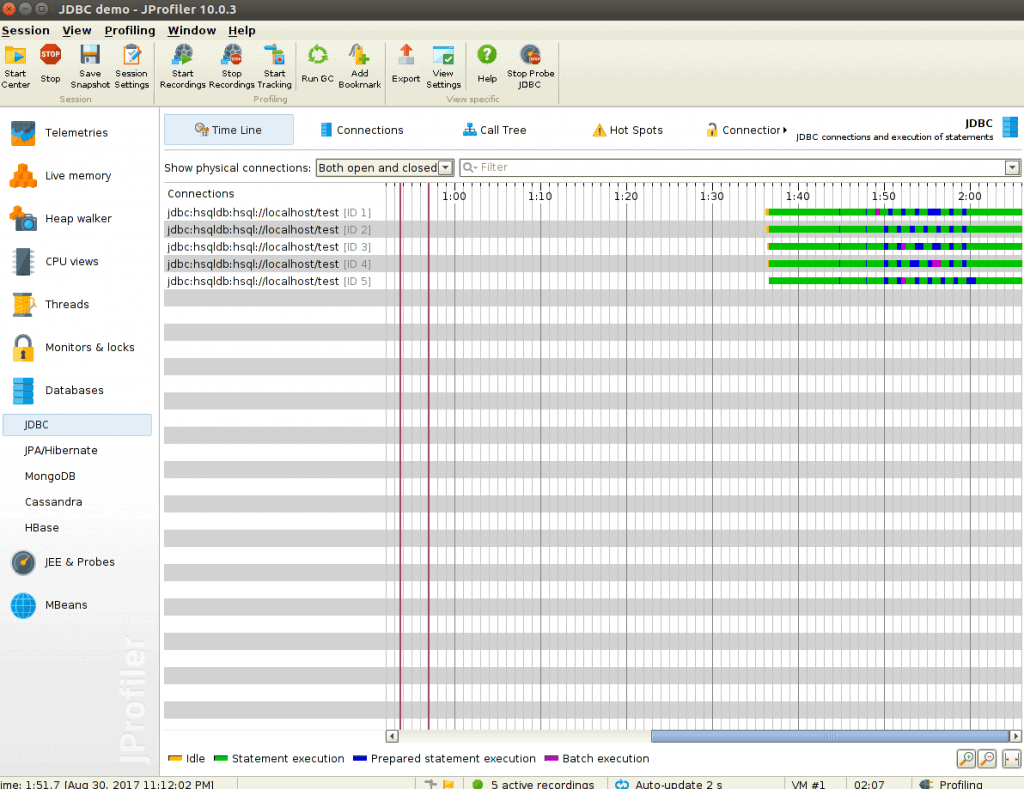JProfiler is a handy tool that allows you to dynamically profile Java-based applications and and perform an accurate analysis so you can solve problems and optimize performance. The application allows you to provile a JMV running locally, a Java Web Start application, a local or remote application server or browser applets that the Java plugin. Final support for Java 9. While we have tracked the evolving state of the new module system in Java 9 over the past JProfiler releases, the final feature set of Java 9 is now expected to remain stable. JProfiler 10 fully supports the latest builds of Java 9 and is expected to support the final release as well. Java Code To Create Pyramid and Pattern In this program, you'll learn to create pyramid, half pyramid, inverted pyramid, Pascal's triangle and Floyd's triangle sing control statements in Java. Omniplan pro 3 12 3 drawer. EJ Technologies JProfiler 10.1.5 (x86/x64) 77 Mb/77 Mb JProfiler is a powerful tool that you can use to profile Java based applications in a dynamic way and enables you to analyze them in hopes of optimizing performance. Container Version Java EE Spec. Source DDL-gen JPA Entities JAR. Issues Oracle WebLogic Server: 10.3.6.0 / 12c: 5 + (JPA 2.0, JSF 2, JAX-RS 1.1) EAR EJB WAR - See application-scoped datasource workaround.
- Jprofiler 10 1 1 – Java Based Applications Examples Pdf
- Jprofiler 10 1 1 – Java Based Applications Examples List
- Jprofiler 10 1 1 – Java Based Applications Examples Free
EJ Technologies JProfiler 10.1.6 (x86/x64) | 161 Mb
JProfiler is a powerful tool that you can use to profile Java based applications in a dynamic way and enables you to analyze them in hopes of optimizing performance.
EXCEPTIONAL EASE OF USE
When you profile, you need the most powerful tool you can get. At the same time, you do not want to spend time learning how to use the tool. JProfiler is just that: simple and powerful at the same time. Configuring sessions is straight-forward, third party integrations make getting started a breeze and profiling data is presented in a natural way. On all levels, JProfiler has been carefully designed to help you get started with solving your problems. Hider 2 5 full.
Jprofiler 10 1 1 – Java Based Applications Examples Pdf
DATABASE PROFILING FOR JDBC, JPA AND NOSQL
Database calls are the top reasons for performance problems in business applications. JProfiler's JDBC and JPA/Hibernate probes as well as the NoSQL probes for MongoDB, Cassandra and HBase show the reasons for slow database access and how slow statements are called by your code. From the JDBC timeline view that shows you all JDBC connections with their activities, through the hot spots view that shows you slow statements to various telemetry views and a list of single events, the database probes are an essential tool for getting insight into your database layer.
EXCELLENT SUPPORT FOR JAVA ENTERPRISE EDITION
Dedicated support for JEE is present in most views in JProfiler. For example, in the JEE aggregation level you see the call tree in terms of the JEE components in your application. In addition, the call tree is split up for each request URI. Also, JProfiler adds a semantic layer on top of the low-level profiling data, like JDBC, JPA/Hibernate, JMS and JNDI calls that are presented in the CPU profiling views. With its JEE support, JProfiler bridges the gap between a code profiler and a high-level JEE monitoring tool.
HIGHER LEVEL PROFILING DATA
JProfiler has a number of probes that show you higher level data from interesting subsystems in the JRE. In addition to the Java EE subsystems like JDBC, JPA/Hibernate, JSP/Servlets, JMS, web services and JNDI, JProfiler also presents high level information about RMI calls, files, sockets and processes. Each of these probes has its own set of useful views that gives you general insight, highlights performance problems and allows you to trace single events. And what's more, all these views are also available for your own custom probes that you can configure on the fly within JProfiler.
Operating System: Windows 10/8/7/Vista, Server 2016/2012/2008, XP
What's New in JProfiler 4.0
Please see the change log for a detailed list of changes.
JProfiler 4.0 introduces the following notable new features:
Jprofiler 10 1 1 – Java Based Applications Examples List

